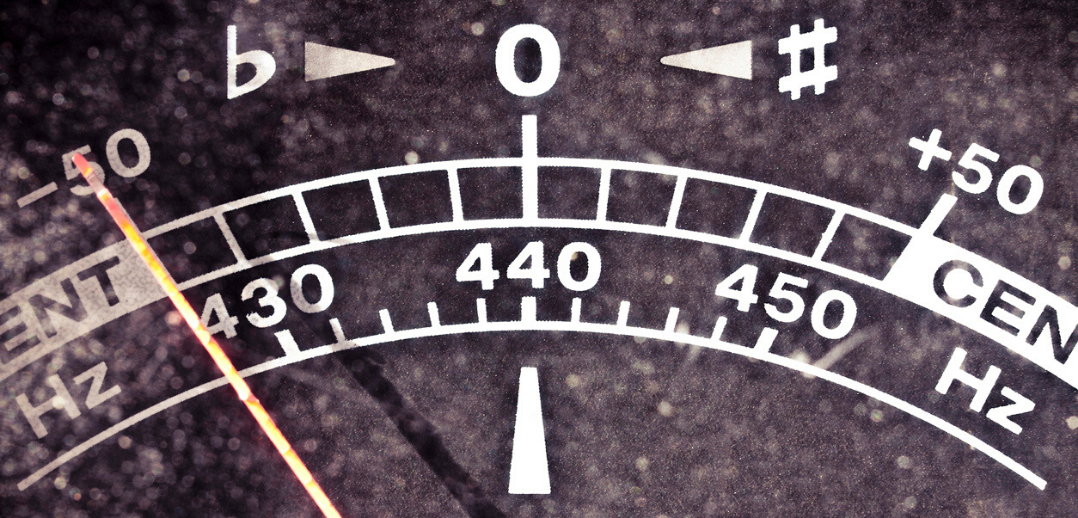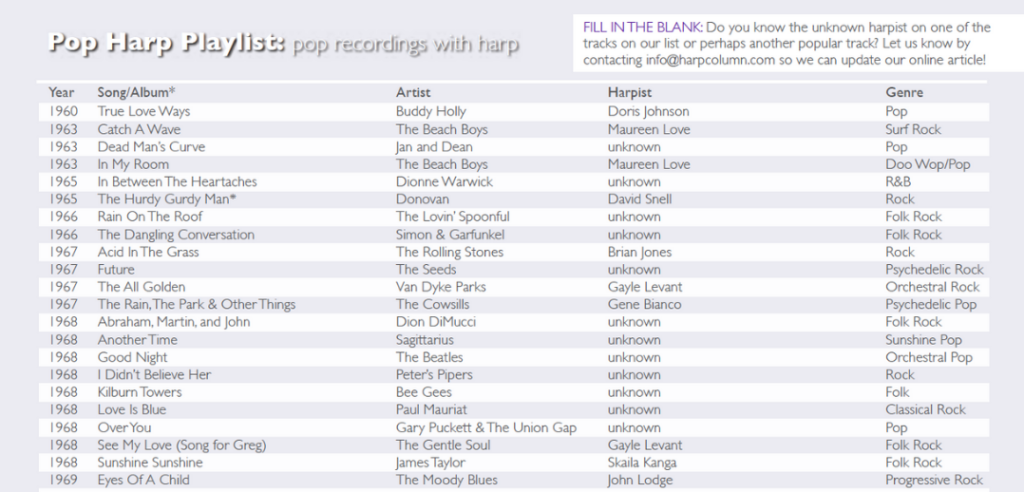This article extra is part of the feature article Fine Tuning in this issue.
Tune often
We asked our experts how to improve the speed of tuning without sacrificing quality. The unanimous answer was to tune the harp more often. Wiley explains, “Do not let it get very out of tune, and you can tune it accurately in a few minutes. A harp tuned only on Wednesday afternoons is out of tune on Wednesday evening, guaranteed. Tuning only once a week is painful, and it might take 20 minutes or more.”
“Practice tuning every single day. Make it a vital part of your everyday warmup,” encourages Lynch. “The more we train our ears, the easier and quicker we can adjust our harps. If you practice tuning and listening to your pitch, it does become easier over time.” Duffy agrees. “Tune every time you sit down to play. The more you tune, the less you need to tune. The harp gets used to holding its pitch so there is less tuning to do, and you get better and faster at tuning by practicing.”
Keep your tuning pins snug.
Most harps use tapered tuning pins. (Some lever harps have threaded tuning pins, so double check with your manufacturer.) The only thing keeping a tapered tuning pin in the neck is the fact that they are wedged into a tapered hole. The very act of turning the pin to tune, or especially to change a string, eventually works the pin out of the neck, loosening its position in the neck. Wiley says, “If your tuning pins turn easily, then your harp is going to go out of tune easily. This is the most common reason a harp will not hold tune very long.” You may have been told to push in while you tune to keep your pins snug, but you can strain your hand and wrist doing that. Just as importantly you cannot get the necessary leverage to tighten a loose tuning pin in a normal tuning position. Wiley suggests the following method: “Use a screwing action not just a turning or spinning action. Screwing means that you will need to push the pin inward while turning. Stand up behind your harp, facing the tuning side of the neck. Place your tuning key onto the tuning pin. Turn the tuning key to lower the pitch while you push (screw) inward on the pin. This turn should be about two hours on the clock (counterclockwise). Then push (screw) the tuning pin inward while bringing the string up to pitch. If you do this properly, the tuning pin will stay firmly in the hole for several weeks or months before needing to be retightened.”
Tune slow and steady up to the pitch.
If the pitch of a string is too high, experts advise dropping the pitch a little too low on purpose, then tuning the string up to pitch. “Since you are tuning in flat, the string’s’ ‘speaking’ length is from the soundboard to the string nut,” Wiley explains. “At the string nut, the string goes over a curved groove as it bends on its way up to the tuning pin. When tuning, 98 percent of the time the string does move evenly and smoothly when you are tuning up to the pitch. If you are tuning down to the pitch, the percentage decreases to about 90 percent—most musicians are not fond of this percentage.”
Pay attention to where and how you pluck the string.
In most registers of the harp, as you tune, you should pluck the string in the same place you would normally play. “Pluck the string in the same place and with the same force that you would to get a mezzo-forte dynamic in normal playing,” Duffy encourages. “Plucking too softly or loudly can distort the pitch and give a false reading on a tuner.”
People, and their tuners, often have a hard time hearing the seventh-octave bass wires. Wiley offers a suggestion. “A way to make these very low pitches easier to decipher is to pluck the string up near the brass action plates. This makes the string favor the higher tones it produces, and thus you can use those pitches to bring the string in tune.”
Tune the harp every time you move it.
Many factors, including changes in temperature, humidity, barometric pressure, being jostled in the car, rolling over bumps as you wheel to the venue, etc., can impact the tuning of your harp. “You can’t tune your harp at home and then expect it to stay in tune once you move it,” Duffy notes. “Even if you move the harp to a room to tune, and then move it to a stage with hot lights or drafts, it will go out of tune.” Give the harp some time to acclimate to its new environment before you tune.
If the harp is really out of tune, keep tuning.
You will probably need to tune multiple times to get a harp that is very out of tune to hold pitch properly. Wiley offers this suggestion, “When a harp comes to me and it is not in very good tune I speed tune it once, maybe twice if it is really out. I go fast and get close; the harp doesn’t mind. Then I go through a second or third time carefully to nail down the pitches.”
Tuning Terminology
Calibrate: You calibrate your tuner by adjusting the reference tuning pitch (measured in Hertz) most often A440, but depending on the ensemble might range from A415 to A443.
Cents: In equal temperament, every semitone (half-step) is divided into 100 cents.
Equal Temperament: The octave is divided into 12 equal parts, each a semitone (or half-step) apart.
Frequency: The number of sound wave crests that pass a fixed point in space during one second in time.
Fundamental Frequency: The lowest frequency produced when an instrument is played. Sometimes called simply the fundamental.
Hertz: Unit for measuring frequency. Abbreviated Hz. Named for Heinrich Rudolf Hertz, who was the first to prove the existence of electromagnetic waves.
Overtones: The higher pitches above the fundamental frequency that occur simultaneously when you pluck a string, blow air through a wind instrument, etc. They are produced because strings and air don’t vibrate in simple, singular ways. Instead, they vibrate with many different frequencies at once—with some overtones being audible and others too faint to hear.
Pitch: The musical sound and its name (for instance A or B-flat) assigned to a particular frequency measured in Hertz. For example, middle C vibrates at 261Hz, and the A just above middle C vibrates at a frequency of 440 times per second, hence the term A440.
Semitone: The smallest distance between two notes in Western music; a.k.a. a half-step.
Tempering or Temperament: The practice of adjusting the intervals between notes in a scale to achieve a particular sound quality.
















